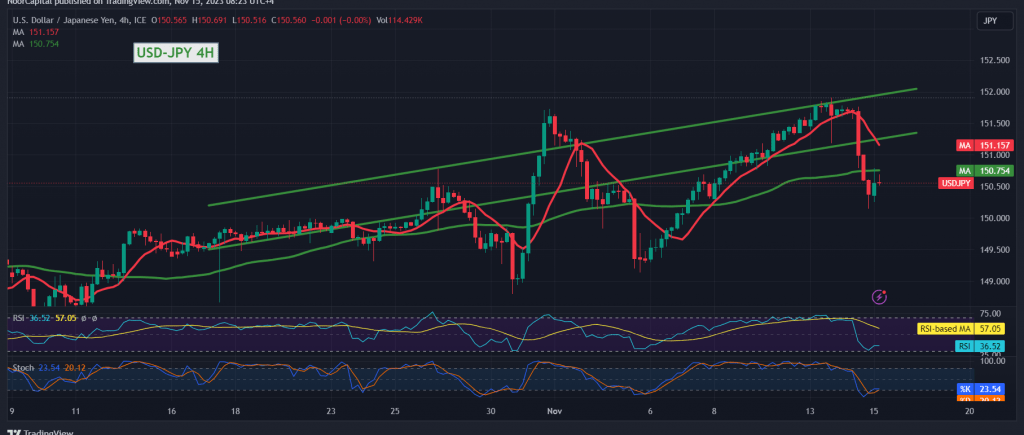Following several successive sessions of ascent, the USD/JPY pair encountered a crucial resistance level around 151.70. Unable to overcome this hurdle, the pair reverted to a negative trade pattern during the previous session, inching closer to a retest of the 150.00 level.
From today’s technical standpoint, examining the 240-minute timeframe chart reveals that the pair has breached the ascending channel’s support floor at 150.50. Additionally, the 50-day simple moving average has resumed applying downward pressure on the price, reinforcing the bearish inclination.
While our outlook leans towards negativity, we prefer to observe the price consolidating below the support of the psychological barrier at 150.00, and more critically at 149.90. This would pave the way for a negative onslaught with an initial target of 149.90, followed by 148.65.
Conversely, a return to trading stability above the pivotal resistance of 151.50, and most importantly 151.70, could disrupt the bearish scenario, redirecting the pair back onto the official upward trajectory with a target of 152.50/152.45.
Note: The Stochastic indicator is currently situated around overbought regions, and we may experience some fluctuations until the anticipated trend emerges.
Caution: Today, we expect high-impact economic data releases from the US economy, including the Producer Price Index, Retail Sales, and New York State Manufacturing Index. From the UK economy, the Annual Consumer Prices will be released. These announcements may lead to high price fluctuations.
Note: Trading on CFDs involves risks. Therefore, all scenarios may be possible. This article is not a recommendation to buy or sell but rather an explanatory reading of the price movement on the chart.
| S1: |
 Noor Trends News, Technical Analysis, Educational Tools and Recommendations
Noor Trends News, Technical Analysis, Educational Tools and Recommendations

